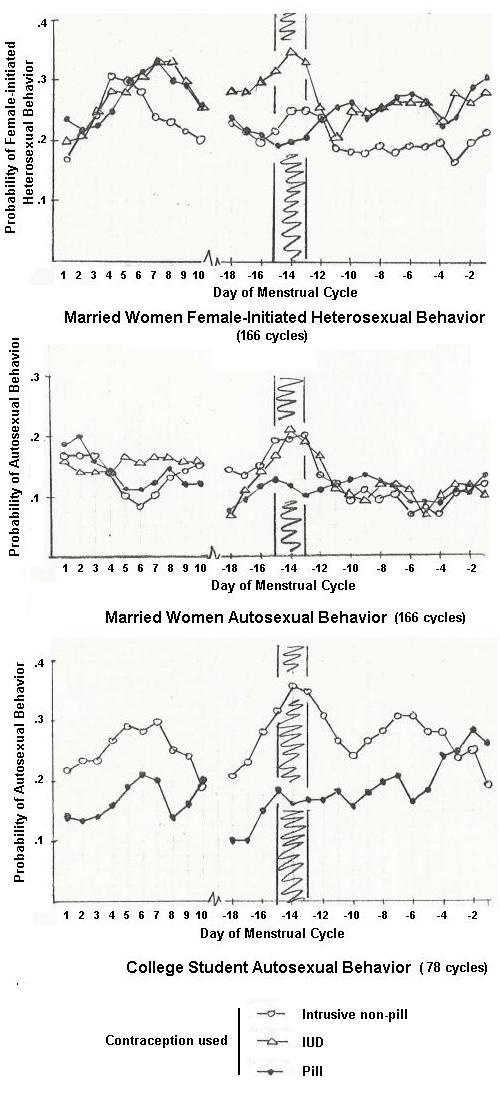Stories
The brain mechanisms of aggression
Motivational systems of social behavior
International Society for Research on Aggression
Behavior Genetics Association Ethics Committee
The World Wide
Runners Club
for Peace
United Nations University for Peace
Charlie Robbins, barefoot runner
* * *
Along with my colleague Alice Gold at Wesleyan during the 1970's we applied for an obtained a government grant to study the sexual behavior of married women as a function of the birth control method they were using. The results of our study, conducted with the help of very capable assistant, Anne D. Burt, showed what had always been assumed, but never before proved, that human females, like all other mammals have a period of increased sexual interest at the time of ovulation.
We were able to succeed, where others have failed, by paying the subjects for very careful data collection (daily questionnaires for many months), and by several new measures based on interviews that Anne conducted with the participants beforehand. Instead of simply measuring intercourse and other heterosexual rates, we distinguished the initiator of the sexual activity, and we also asked participants to record autosexual activity, i.e. activity without a partner.
It turned out that estrus was masked by other effects for heterosexual behavior in the case of pill contraception (which blocks the hormonal basis of estrus) and types of contraception such as condoms, diaphragm which interfere with the spontaneity of the interaction. Only autosexual behavior and behavior of subjects with non-intrusive contraception (the IUD) showed the estrus effect.
As always seems to be the case when one makes an important scientific discovery, it was difficult to publish our results. First they were rejected by Science Magazine when the reviewer said that "in this controversial field, the data and conclusions have to be cast iron." I remarked that this sounded like the old fashioned "chastity belt" that women were forced to wear. We appealed the rejection through Neal Miller but without success. Then we published in the very prestigious New England Journal of Medicine. This got us publicity in many newspapers around the world, but also the wrath of the editor of the journal when he discovered that we had already published some of the data in a journal for doctors' offices. We were forced to publish a formal apology!

The first two figures above are from the married women study and the third figure is an unpublished replication that a graduate student, Leslie Kassman, conducted with college students.
One of the interesting aspects of the data is the fact that you can distinguish the proportion of a human behavior that is "biological" from the proportion that is "social/cultural." Since the biological portion is abolished by the contraceptive pill, it is simply necessary to measure the difference in the integrals of the "pill" and "non-pill" curves. This amounts to about 5% which is probably as good an indication as one can get on the proportion of human behavior that is biological as opposed to socio-cultural.
Had I not become more involved in political, and, in particular, peace activity in the succeeding years, I would have tried to publish an analysis of biological vs social determination, based on these data, in a popular journal such as Scientific American.
Our work came to an unfortunate end soon after we published the estrus data because Alice Gold was denied tenure by my colleagues in the Psychology Department. She was the fourth in a string of six consecutive demissions or denials of tenure to women that were based on faulty, sexist reasons. I was rapidly losing any confidence that I had in academic life.
 |
Stages
1986-1992
Fall of Soviet Empire
1992-1997
UNESCO Culture of Peace Programme